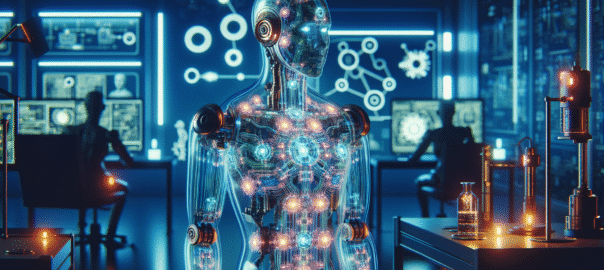Humanoid robots are about to transform our world, one step at a time.
The future of robotics is unfolding before our eyes, with companies like Intempus pioneering emotional AI in robotics, and now OpenMind emerges as a game-changing player in the humanoid robot operating system landscape.
As a musician who has collaborated with AI systems, I’ve witnessed firsthand how technology can mimic and augment human capabilities – and trust me, these humanoid robots are nothing like the clunky machines of yesterday.
OpenMind: The Android of Humanoid Robots
OpenMind is revolutionizing the humanoid robot ecosystem with its groundbreaking OM1 software layer. Founded in 2024, the Silicon Valley startup aims to create an open, hardware-agnostic operating system that enables robots to interact more naturally with humans.
The company’s innovative FABRIC protocol allows robots to verify identity and share contextual information, essentially creating a learning network where machines can rapidly exchange knowledge. Stanford professor Jan Liphardt, the founder, believes this approach will transform how robots communicate and collaborate.
With a recent $20 million funding round led by Pantera Capital, OpenMind is preparing to ship its first fleet of 10 OM1-powered robotic dogs by September. Their goal is clear: get real-world feedback and iterate quickly, embodying the tech startup mantra of continuous improvement.
The potential applications are vast – from home assistance to complex industrial tasks. By focusing on creating a flexible, learning-oriented operating system, OpenMind is positioning itself as the potential Android of the robotics world.
Humanoid Robots as Personalized Learning Companions
Imagine a startup that develops customizable humanoid robots specifically designed as adaptive learning companions for children with diverse educational needs. These robots would use OpenMind’s OM1 operating system to create personalized, interactive learning experiences tailored to each child’s learning style, pace, and interests.
The business model would involve selling these educational robots to schools, educational institutions, and parents, with tiered pricing based on customization levels. Additional revenue streams would include subscription-based content updates, specialized learning modules, and ongoing software enhancements.
Embracing the Robotic Revolution
Are you ready to witness the next frontier of human-machine interaction? OpenMind’s approach suggests we’re not just building robots, we’re creating collaborative partners. What possibilities do you see emerging from this technological leap? Share your thoughts and join the conversation!
Humanoid Robot FAQ
Q1: What makes OpenMind’s approach unique?
A: Their open, hardware-agnostic software layer allows robots to learn and share information rapidly.
Q2: When will their first robots be available?
A: OpenMind plans to ship 10 robotic dogs powered by OM1 by September 2025.
Q3: How will these robots interact with humans?
A: Using advanced contextual understanding and learning protocols to enable more natural interactions.
